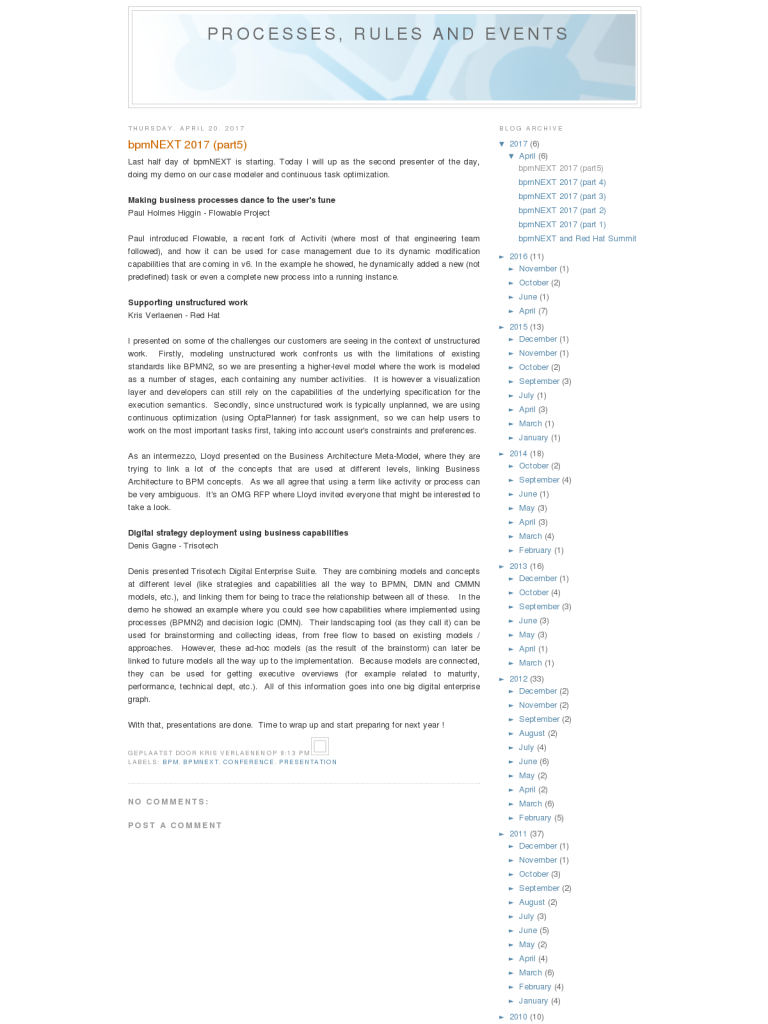bpmNEXT 2017 (part5)
Blog: PROCESSES, RULES AND EVENTS
Last half day of bpmNEXT is starting. Today I will up as the second presenter of the day, doing my demo on our case modeler and continuous task optimization.
Making business processes dance to the user’s tune
Paul Holmes Higgin – Flowable Project
Paul introduced Flowable, a recent fork of Activiti (where most of that engineering team followed), and how it can be used for case management due to its dynamic modification capabilities that are coming in v6. In the example he showed, he dynamically added a new (not predefined) task or even a complete new process into a running instance.
Supporting unstructured work
Kris Verlaenen – Red Hat
I presented on some of the challenges our customers are seeing in the context of unstructured work. Firstly, modeling unstructured work confronts us with the limitations of existing standards like BPMN2, so we are presenting a higher-level model where the work is modeled as a number of stages, each containing any number activities. It is however a visualization layer and developers can still rely on the capabilities of the underlying specification for the execution semantics. Secondly, since unstructured work is typically unplanned, we are using continuous optimization (using OptaPlanner) for task assignment, so we can help users to work on the most important tasks first, taking into account user’s constraints and preferences.
As an intermezzo, Lloyd presented on the Business Architecture Meta-Model, where they are trying to link a lot of the concepts that are used at different levels, linking Business Architecture to BPM concepts. As we all agree that using a term like activity or process can be very ambiguous. It’s an OMG RFP where Lloyd invited everyone that might be interested to take a look.
Digital strategy deployment using business capabilities
Denis Gagne – Trisotech
Denis presented Trisotech Digital Enterprise Suite. They are combining models and concepts at different level (like strategies and capabilities all the way to BPMN, DMN and CMMN models, etc.), and linking them for being to trace the relationship between all of these. In the demo he showed an example where you could see how capabilities where implemented using processes (BPMN2) and decision logic (DMN). Their landscaping tool (as they call it) can be used for brainstorming and collecting ideas, from free flow to based on existing models / approaches. However, these ad-hoc models (as the result of the brainstorm) can later be linked to future models all the way up to the implementation. Because models are connected, they can be used for getting executive overviews (for example related to maturity, performance, technical dept, etc.). All of this information goes into one big digital enterprise graph.
With that, presentations are done. Time to wrap up and start preparing for next year !
Leave a Comment
You must be logged in to post a comment.








